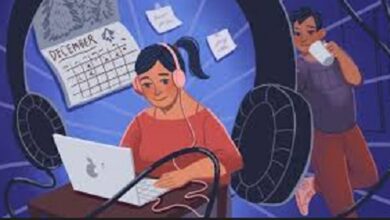Types of Texts and their Functions
What is text
A text is a manifestation of language . It can be defined as everything that is said by a sender and interpreted by a receiver. In this way, everything that is interpretable is a text. Another form of conceptualization is to think that everything that produces a complete meaning , that is an understandable message, is a text. In this article we will provide you different types of texts.
Types of Texts and their Functions
Below are the types of texts along with their functions.
1. Descriptive
“Des” means descending, that is, from top to bottom in the form of a list. When we describe we list features.
Among the types of texts it is, perhaps, the most direct and its function is to describe a product or service in a clear and concrete way so that it quickly transmits its usefulness to the lead.
On e-commerce sites or platforms like Google Shopping, it is the texts that make the difference.
2. Expository
Exhibiting is placing something in view of others, for example, a product or in the literary case an idea, theory, or thesis. When we expose we do not judge or analyze, we simply show something.
For example, when we quote an author or refer to his thought to exemplify something. Exposing what we think about something or exposing thoughts of references in the area is a way of building authority.
3. Scientific
This is very important and is also linked to authority. The scientific mode uses verifiable data and cites sources. It is a way of showing how trustworthy and truthful your domain is. Surveys, statistics, reports, among other types of texts.
All the scientific data in a text must be verifiable and, obviously, serious. Remember that one of the main reasons for the navigator to choose is trust.
4. Argumentative
An argument is an “instrument to make something clear” and is a very useful type of text when what we need is to persuade.
When we argue our narrative has to be oriented to prove something. Here we talk about the reasons that lead a person to take an action and the benefits that will be obtained by taking it.
5. Narrative
A good story enters regions of our brain that are dominated by symbols. Therefore, if we handle these symbols well in a text, we will build a bridge with our audience.
Here the best example is that of storytelling, by creating a narrative with a beginning, middle, and end in which a protagonist must overcome obstacles, you will be establishing points of identification with your audience who will feel that you are telling their own story.
6. Literary
Although everything is literature, we have to place this type as “strictly literary”, to create a space dedicated to artistic and creative texts. It is that literature – and art in general – are closely linked to entertainment.
Poems, short stories, chronicles, and fables are examples of this kind of text.
7. Advertising text
These are texts for advanced writers, this is where recipes and spells are applied so that the client recognizes their need. The advertising texts are intended to persuade and convince about a certain product.
For that they use many artifices in the texts, such as triggers or subliminal messages – the latter is at the limit of the ethics so use it sparingly.
8. Instructions
They are the texts that, through instructions, teach us to do something. The famous step-by-step tutorial is the best example.
But don’t think it’s so easy, these texts have to be extremely pedagogical and easy to understand for them to work, otherwise, they can be a backfire.
9. Historical text
These are the texts that refer to great facts or events in history and/or great figures. Biographies, national dates, cultural commemorations, among other events that in some way modify people’s daily lives.
Perhaps the best example within the context of Marketing to understand the function of this type of text is Seasonal Marketing.
10. Legal
These texts are used to describe processes in the area of Law, whether in contracts or in articles of legal documents.
The language of legal texts is usually quite technical and complex, making it more objective to read.
11. Digital text
You can imagine that this topic has a great diversity because it brings together all the possibilities of the digital age, emails, newsletters, chats, instant messaging, eBooks, blog posts.
But deep down they all have two common denominators that are essential to understanding them:
- fast production;
- easy distribution.
12. Journalistic
And finally, the texts that work with journalistic information, which have their own character and that is the ability to generate intense and short-lived movement.

